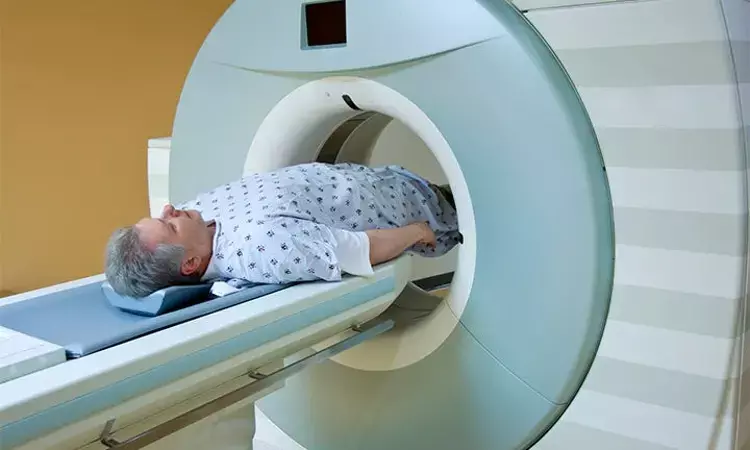- Home
- Medical news & Guidelines
- Anesthesiology
- Cardiology and CTVS
- Critical Care
- Dentistry
- Dermatology
- Diabetes and Endocrinology
- ENT
- Gastroenterology
- Medicine
- Nephrology
- Neurology
- Obstretics-Gynaecology
- Oncology
- Ophthalmology
- Orthopaedics
- Pediatrics-Neonatology
- Psychiatry
- Pulmonology
- Radiology
- Surgery
- Urology
- Laboratory Medicine
- Diet
- Nursing
- Paramedical
- Physiotherapy
- Health news
- Fact Check
- Bone Health Fact Check
- Brain Health Fact Check
- Cancer Related Fact Check
- Child Care Fact Check
- Dental and oral health fact check
- Diabetes and metabolic health fact check
- Diet and Nutrition Fact Check
- Eye and ENT Care Fact Check
- Fitness fact check
- Gut health fact check
- Heart health fact check
- Kidney health fact check
- Medical education fact check
- Men's health fact check
- Respiratory fact check
- Skin and hair care fact check
- Vaccine and Immunization fact check
- Women's health fact check
- AYUSH
- State News
- Andaman and Nicobar Islands
- Andhra Pradesh
- Arunachal Pradesh
- Assam
- Bihar
- Chandigarh
- Chattisgarh
- Dadra and Nagar Haveli
- Daman and Diu
- Delhi
- Goa
- Gujarat
- Haryana
- Himachal Pradesh
- Jammu & Kashmir
- Jharkhand
- Karnataka
- Kerala
- Ladakh
- Lakshadweep
- Madhya Pradesh
- Maharashtra
- Manipur
- Meghalaya
- Mizoram
- Nagaland
- Odisha
- Puducherry
- Punjab
- Rajasthan
- Sikkim
- Tamil Nadu
- Telangana
- Tripura
- Uttar Pradesh
- Uttrakhand
- West Bengal
- Medical Education
- Industry
Microultrasound as good as MRI for detection of prostate cancer: Study

Canada: The detection rate of micro-ultrasound is comparable to multiparametric MRI in biopsy-naive men, shows a recent study in the journal Radiology.
According to the study, similar rates of prostate cancer detection were seen with MRI and micro-ultrasound in men who have not yet been biopsied, but with the MRI pathway, more biopsies were avoided than with micro-US. Also, there was no benefit of nontargeted systematic biopsy addition to the MRI- plus micro-US–targeted biopsy pathway.
Previous studies have shown that multiparametric MRI increased the detection of clinically significant prostate cancer (csPCa). For csPCa detection, micro-US is being investigated. Considering this, Sangeet Ghai, University of Toronto, Toronto, ON, Canada, and colleagues aimed to compare multiparametric MRI and micro-US for csPCa (grade group ≥2) detection and to determine the proportion of MRI nodules visible at micro-US for real-time targeted biopsy in a prospective, single-center trial.
The trial enrolled biopsy-naive men with suspected prostate cancer (PCa) between May 2019 and September 2020. All patients underwent multiparametric MRI followed by micro-US. Interpretation of the findings was done in a blinded fashion, followed by targeted biopsy and nontargeted systematic biopsy using micro-US. The exact McNemar test was used to compare the proportions. The differences in proportions were calculated.
The findings of the study were as follows:
· Ninety-four men (median age, 61 years) were included. MRI- and micro-US–targeted biopsy depicted csPCa in 39% and 35% of the 94 men, respectively; clinically insignificant PCa in 15% and 16%; and cribriform and/or intraductal PCa in 15% and 14%.
· The MRI- plus micro-US–targeted biopsy pathway depicted csPCa in 38 of the 94 men.
· The addition of nontargeted systematic biopsy to MRI- plus micro-US–targeted biopsy did not enable the identification of any additional men with csPCa but did help identify nine additional men with clinically insignificant PCa.
· Biopsy was avoided in 32 of the 94 men (34%) with MRI and nine of the 94 men (10%) with micro-US.
· Among 93 MRI targets, 62 (67%) were prospectively visible at micro-US.
To conclude, in biopsy-naive men, multiparametric MRI and micro-US showed similar prostate cancer detection rates; although micro-US was inferior to multiparametric MRI for biopsy avoidance, most MRI lesions were visible at micro-US.
Reference:
The study titled, "Comparison of Micro-US and Multiparametric MRI for Prostate Cancer Detection in Biopsy-Naive Men." was published in the journal Radiology.
DOI: https://doi.org/10.1148/radiol.212163
Dr Kamal Kant Kohli-MBBS, DTCD- a chest specialist with more than 30 years of practice and a flair for writing clinical articles, Dr Kamal Kant Kohli joined Medical Dialogues as a Chief Editor of Medical News. Besides writing articles, as an editor, he proofreads and verifies all the medical content published on Medical Dialogues including those coming from journals, studies,medical conferences,guidelines etc. Email: drkohli@medicaldialogues.in. Contact no. 011-43720751


